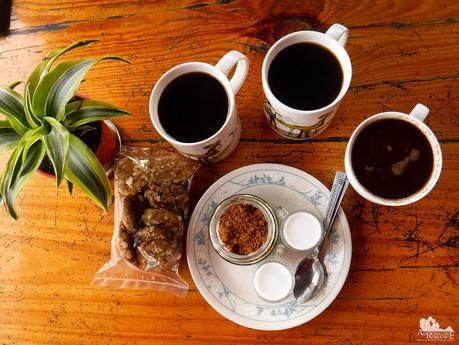
It has been said that a local dish or delicacy imbues the whispered story of a place. We absolutely agree with that. Each morsel, each sip brings us closer to a place’s unique history, culture, and soul. And with more than 7,000 islands in our country, that’s a whole lot of tales! We celebrated the second quarter of this year by taking part of a culinary story in the Cordillera Administrative Region in Northern Luzon, Philippines.
Last year, we promised our daughter Alexa that we’ll bring her to Baguio, Sagada, and Bontoc if she achieves good grades. She did excellently, and we stayed true to our word. We packed our Deuter packs and headed to the airport, excited to get this food trip and mini-climbing adventure on the way.
This was one chance I couldn’t pass up, and I HAVE to include it in this blog post. When we deplaned at Clark International Airport, I asked the lead stewardess if I could enter the aircraft’s cockpit and have a photo with the flight crew. I wasn’t expecting anything at all, but wonder upon wonders! The captain himself obliged to let me sit on his chair! And we had a short chat with the first officer, who is actually a fellow Cebuano!
Being an avid model builder, I’ve always been fascinated by airplanes. Being in a real, modern, high-tech, glass cockpit of an Airbus A-321 with all the buttons, switches, screens, and gizmos around me was truly a lifetime experience I will never forget.
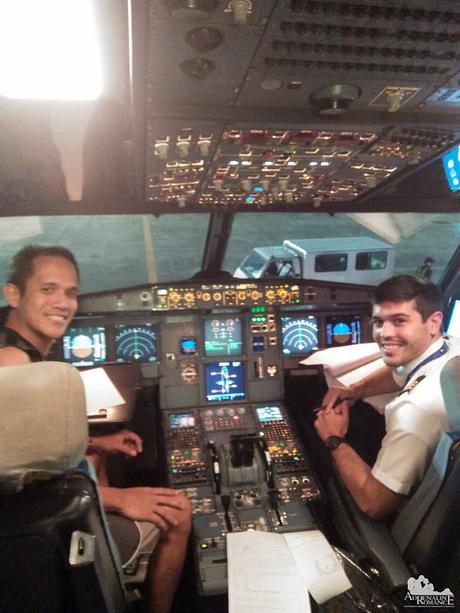
From Pampanga, we took a five-hour evening bus trip to Baguio. As we got off the bus, icy air washed over us like a windless gust. The midnight air was so cold that we shivered even though we wore warmers and jackets. But the chill gave us an excuse to eat our first Cordillera meal—steaming and spicy lugaw served in a humble yet popular roadside restaurant!
Lugaw is our own version of Cantonese-style congee. It is usually thicker and retains the shape of the rice grains. Each of our bowls is topped with freshly chopped scallions, crispy fried garlic, chili sauce, some chunks of chicken meat, and hard-boiled egg. Hot and spicy lugaw is a favorite of Filipinos who live in subtropical highland climates where the air is cold. The porridge is often served to children, sick people, or the elderly as it is tasty and easy to digest. It’s also great to eat on cold, rainy days.
Yup, There’s nothing better than something warming you from the inside, and a bowl of lugaw does the job perfectly.
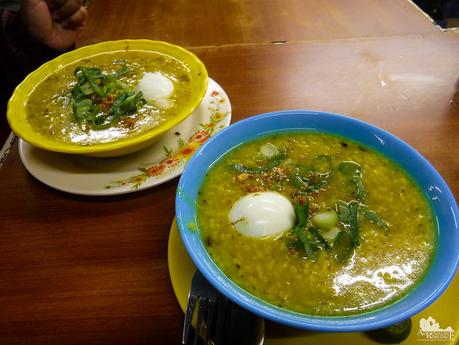
At 3:30 AM, we took another bus to the mountain resort town of Sagada in the Mountain Province. It’s a 5-hour trip from Baguio, so we decided to snooze off. By the time we arrived in Sagada, the town was fully awake, and the sun was high in the sky. What a beautiful day!
We have been to Sagada last 2015, and we fell in love with the place. The problem that time was that we booked our trip through a commercial tour, so we didn’t have a lot of opportunities to explore the town on our own. This time, we did it DIY (do it yourself) to allow us a great degree of freedom in getting around.
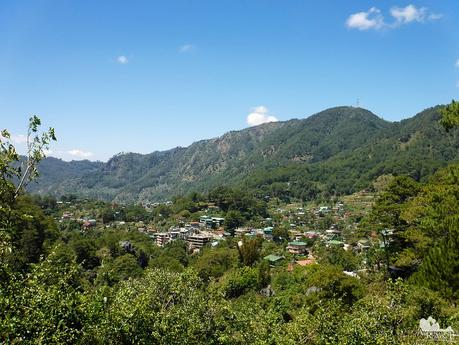
Being a popular summer destination, Sagada has a number of cafes, bistros, and restaurants although virtually none of them are in the range of luxury. But opulence, although wanted, doesn’t matter for us. Our family consists of avid low-budget backpackers; we’re just as happy eating a simple meal in a campsite as enjoying a buffet in a luxury hotel.
We walked for a while to search for a cafe that offers breakfast and found this rasta-themed one.
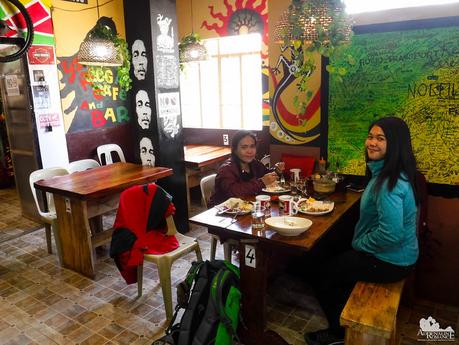
Our morning meal was a usual silog, a popular Filipino combo meal consisting of fried rice, an egg, and a meat of some sort. Silogs are usually eaten as breakfast food, but many establishments offer them all day long. We ordered hotsilog (hotdog), chiksilog (chicken with savory sauce), and bangsilog (fried milkfish).
But what made these silogs stand out are the servings of green salad that come along with the meal. We could identify the carrots and the lettuce, yes. But there are these crispy purple slivers and translucent white strips; these are cabbages of some sort. They taste fresh and wonderful!
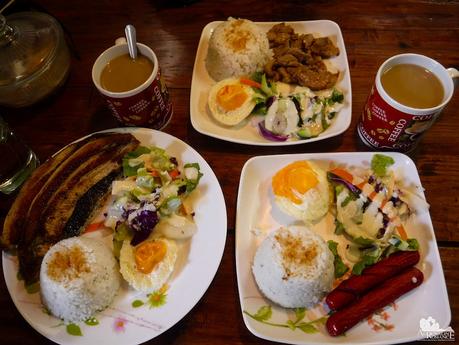
After breakfast, we decided to take Alexa to Sagada’s famous Hanging Coffins. On the way, we came across coffee shops drying out harvested coffee beans in the sun. Once they’re dry, the beans are then grounded, ready to be brewed into fresh coffee that Benguet is known for.
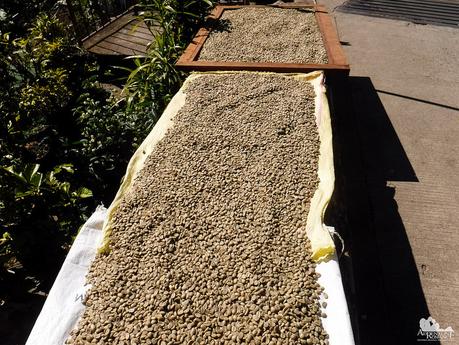
Perfectly baked bread, anyone? We love the crunchy crust and the soft inside. They are perfect for coffees, soups, and various cheeses.
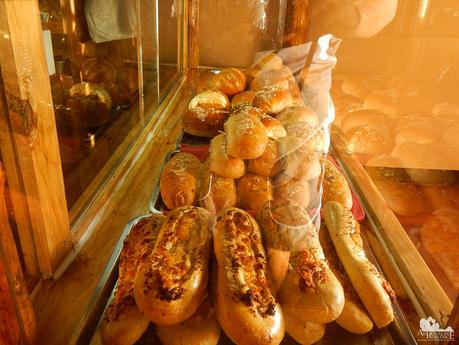
Strawberry, raspberry, blueberry, and mango jams are total hits along with various kinds of honey. Locally brewed fruit wines are available at affordable prices; unfortunately, we didn’t buy any because the airline won’t allow us to bring bottles in our carry-on backpacks. Like many of our trips, we don’t usually bring check-in luggage to save on airfare.

Delicacies such as cookies, mini-cakes, coffees, jams, and sweets are hawked at the town center. You can splurge on these gastronomic specialties.
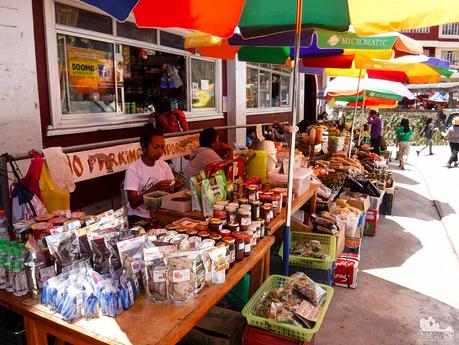
We went down to Echo Valley to check out the Hanging Coffins. Passing through the cemetery towards the karst formations, the rock climbing crag, and the pine trees brought back familiar feelings of serenity.
But there were noticeable changes, particularly the concrete pathway and the metal railings that led from the edge of the cemetery right to the Hanging Coffins. While the LGU understandably installed the railings for safety, we found it ugly, unnecessary, and out of place. You see, the challenge of descending down Echo Valley to see the Hanging Coffins is supposed to be part of the adventure. But the LGU destroyed the essence of that adventure.

The Hanging Coffins of Sagada talk volumes about the history and culture of the Cordillera peoples. There are several historical reasons why their ancestors prefer being put to rest in such a way:
- Most of the people who want to be buried in the hanging coffins are the wealthy, revered, and powerful. Relatives of the deceased believe it’s a travesty for such honorable people to be buried under the ground.
- Elderly people were don’t want to be buried in the ground because they fear their corpses will be eaten by animals, stolen by thieves, or defaced by their adversaries. They want to be buried in high places where their corpse are left untouched.
- They want to be closer to their ancestors in heaven. The higher they are, the better.
The coffin of the deceased is first bolted on the cliff a few days before the burial. During the burial day, the dead body—which undergoes a lot of preparation and rituals—is lifted up and sealed in the affixed coffin.
One has to be married and have grandchildren in order to be buried in a hanging coffin. Sagada’s elders are among the last practitioners of this ancient, dying ritual as the younger generation adopts more modern and convenient ways to bury the dead.
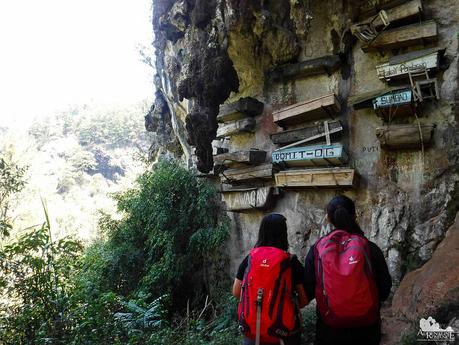
Near the Hanging Coffins is this coffin being buried and concealed inside a cavity. This is another ancient practice; dying folks want to go back to the earth where they belong. Long ago before the advent of cemeteries, common people were buried this way.
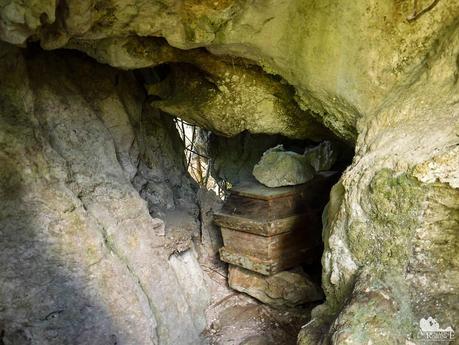
The day was uncharacteristically hot even though we were in the highlands. But the massive forests of pines made the air fresh and crisp. Hopefully, Sagada stays this way and won’t be tempted to cut down these pine forests in the name of progress and urbanization.
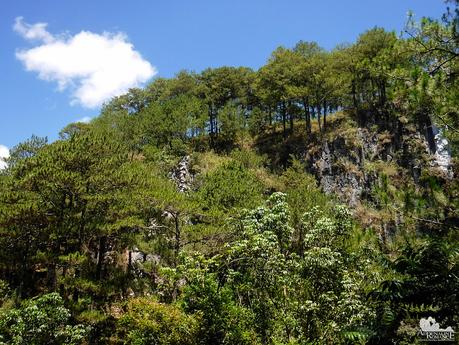
We were still quite full after that heavy breakfast and constant snacking. Thus, for lunch, we simply sat down on the grassy area in front of the Church of St. Mary the Virgin and munched on some street food. We ate tempura, squid balls, and tubs of yogurt.
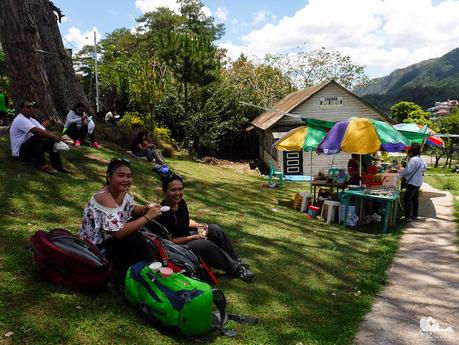
After lunch, we returned to our homestay to catch up some much-needed shut-eye; we could not properly sleep inside a moving bus. At around 4:00 PM, we woke up, dressed, and continued our hunt for great food in Sagada.
A short distance from where we’re staying, we came across this interesting log cabin. This is Gaia Cafe and Crafts, and it’s one of the most popular cafes in Sagada.
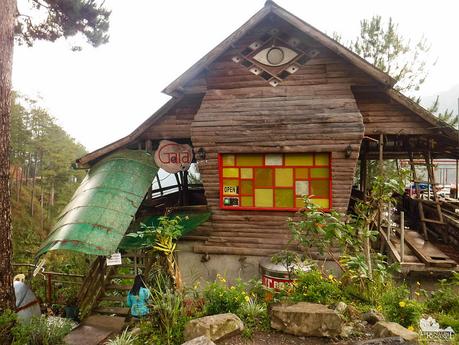
For us, the star attraction of Gaia is not just its stimulating coffee and dazzling sweets. It is its location, which overlooks verdant rice fields and terraces with lofty mountains in the background.
Being far away from any metropolis, Sagada still derives its income from agriculture. Local farmers grow rice, cabbages, tomatoes, beans, and other temperate produce. Coffee is also a thriving industry here.
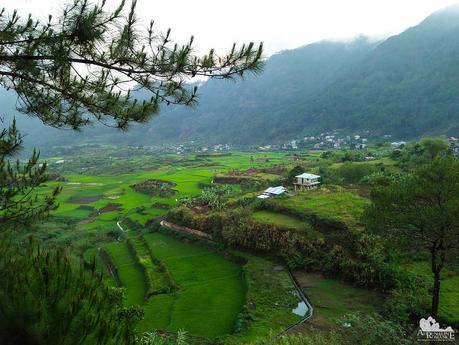
An entire wall of glass allows visitors to enjoy the mesmerizing view while enjoying their meals. Alexa silently observes a river of fog crosses the valley.
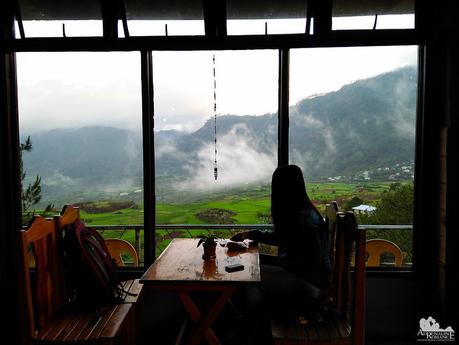
This may come as a surprise to many, but the Philippines is actually a major coffee-drinking country. No, it’s not because we have Starbucks, Seattle’s Best, or Tom and Tom outlets. Our ancestors have been drinking versions of local coffee such as Kapeng Barako in Batangas, Civit Coffee in the Cordilleras, Kape Musang in Mindanao, and Kapeng Inanag in the Visayan Islands.
We ordered hot, brewed Benguet coffee, which is a blend of Excelsa and Robusta beans. Shot glasses of fresh goat’s milk are included to add a dash of creaminess in our drinks. Alexa had a mug of hot chocolate, sweetened with muscovado sugar. We paired our drinks with chocolate chip cookies.

“The joy of life comes from our encounters with new experiences, and hence there is no greater joy than to have an endlessly changing horizon, for each day to have a new and different sun.” – Christopher McCandless
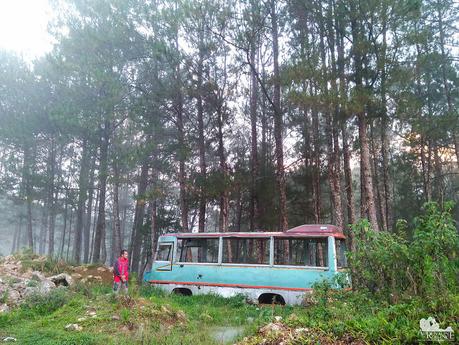
For some reason, Sagada’s Lemon Pie House was closed when we got there. Similarly, Yogurt House was closed for three days as it was the venue of a traditional Kalinga wedding. But upon the recommendation of our homestay host, we decided to try out Misty Lodge and Cafe, a few miles away from the town center.
Thus, the next day, after our trek up Marlboro Country, we visited the establishment, which is located at the corner of a vast pine forest. Filled with books, traditional decors, lamps, figurines, and inspirational posters, this is one of the most visually stunning restaurants we’ve ever visited.
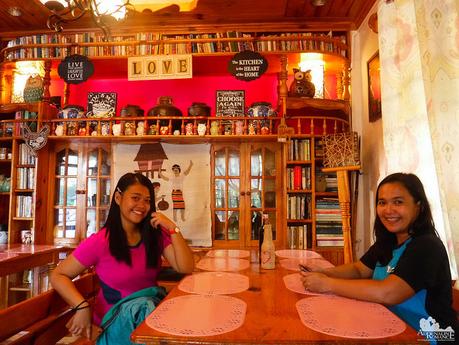
We ordered our favorite silog meals again. While everything is delicious, my baconsilog stood out among the rest. The bacon is made of locally salted and smoked meat. Being both crispy and juicy, it beats any commercially available bacon.
It has been said that good bacon is heaven. You can definitely find heaven in Sagada’s Misty Lodge and Cafe.
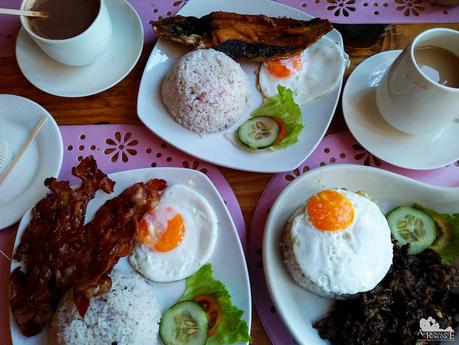
For dessert, we ordered freshly made yogurt, which is dazzlingly sweet and sour at the same time. Preserved cranberries and blueberries are added as toppings, giving the yogurt an extra kick of sweetness.
Let us tell you: after finishing these bowls cranberry and blueberry yogurt, we actually had thoughts of moving here in Sagada. Yes, it’s that good!
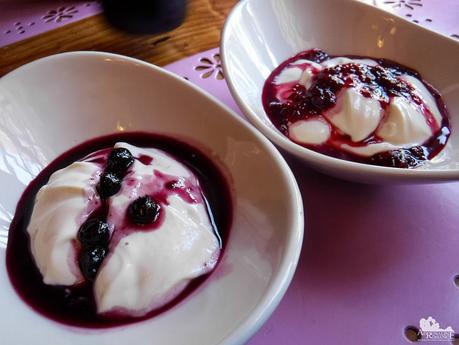
Our Cordillera holiday continued in Bontoc, which is a 30-minute jeepney ride from Sagada. Being in a low valley surrounded by vast mountain ranges that block cool highland winds, the temperature in Bontoc is uncharacteristically high like that in large cities.
We desperately need something to cool ourselves. So we headed to Orange Cafe and ordered a few glasses of cherry Italian Soda. That’s ice-chilled carbonated water drizzled with cherry syrup! Sweet, cool, and totally refreshing!
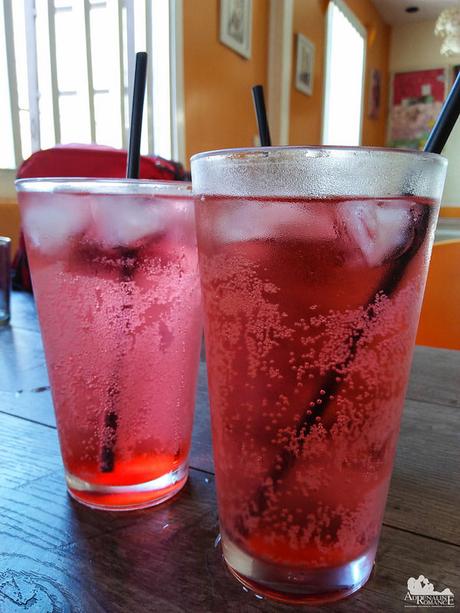
We decided to have lunch in Orange Cafe before proceeding to the highland barangay of Maligcong. Having eaten a lot of meaty dishes the week before, we ordered vegetarian and pesto pasta to wash down all those fats, salts, and proteins. Freshly prepared pasta topped with in-season vegetables—nothing could be tastier and healthier!
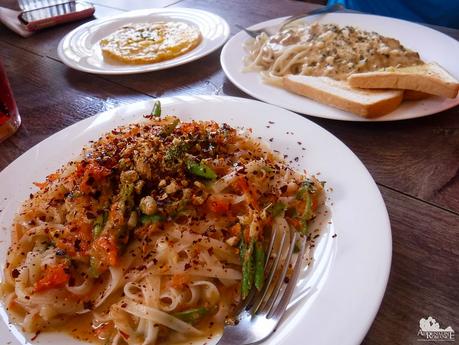
But no matter how healthy our lunch is, we just can’t resist this slice of sinfully sweet cheesecake. Mmmmmm!

We reached Suzette’s Maligcong Homestay in Barangay Maligcong, our jump-off point for our climb up Mt. Kupapey and Mt. Fato. We were just about to climb Mt. Fato when the skies opened and unleashed her fury. We had our first-hand experience with a hailstorm, and it was awe-aspiring! We’ll tell you about it in an upcoming post.
Our guide decided to abort the afternoon’s climb for safety; no one wants to be in the open being pelted by hailstones the size of marbles! We altered our itinerary to include both Mt. Kupapey and Mt. Fato the morning after.
Before turning in early, Maam Suzette served us a home-cooked dinner of grilled bangus and a side of healthy vegetables that were just plucked from the farms.
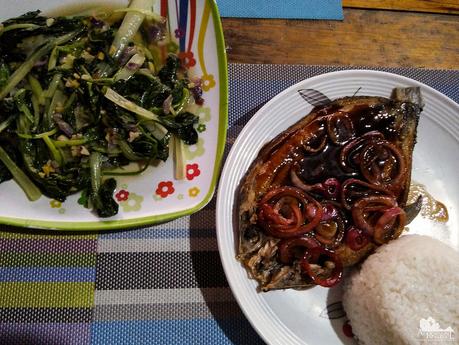
Exhausted after our early morning Mt. Kupapey-Mt. Fato traverse, we were definitely looking for an energizing meal. Maam Suzette was already anticipating that, so she prepared a satisfying breakfast of eggs, hotdogs, sausages, and chicken broth. The sausages stood out as they were made locally from sweetened ground meat.

Satisfied of our successful traverse, we left Bontoc at noon and reached Baguio in the evening where we plan to take a red-eye bus trip back to Manila. While waiting for our bus, we whiled away the time tasting street delights in Baguio’s night market.
The street market is held every night from 9:00 PM to 12 midnight on Harisson Road, right beside Burnham Park. Everything that can be brought is hawked here—clothes, jackets, bags, accessories, gadgets, souvenirs, decors, and more! In fact, we were able to buy high-quality fleece jackets and windbreakers here.
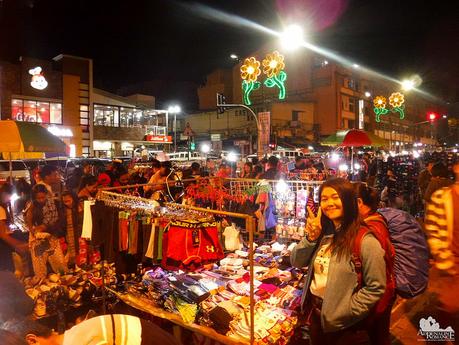
Of course, the night market is rife with delicious street food being sold at very affordable prices. For a foodie, this is truly a paradise! And it seems Baguio has a vast number of foodies; the food section of the market swelled to hundreds of hungry souls.
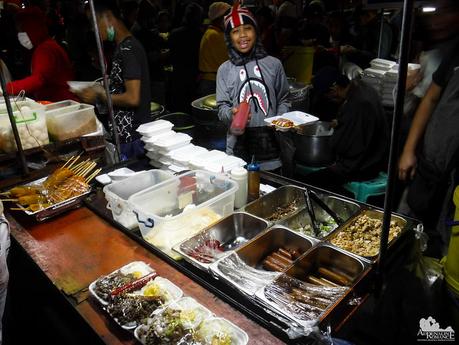
This time, we didn’t eat our dinner in a fancy restaurant or cafe. We ate food out in the cold streets like the happy locals. The collage below shows just a fraction of the meals offered in Baguio’s street market.

With a little over Php 200 (around 4 USD), we had a filling dinner of tempura, chicken skin, squid balls, takoyaki, and hot mami (noodles and other fillings swimming in a pork, beef, or chicken broth). We washed our meals down with several cups of pandan, buko, and pineapple juice.
Before boarding the bus to Manila, we bought a few pasalubongs including fresh strawberries that Baguio is well known for.

What a gastronomic story indeed! But we know this is just an introduction, the first paragraph of a long tale. After all, the Cordillera Administrative Region covers 19,422 square kilometers of Luzon. There are more culinary snippets to enjoy. We’ll surely be back, hungry for more!
Itinerary*
Day 1 – Arrival in Baguio, travel to Sagada
4:45 PM – depart Mactan International Airport
6:15 PM – arrival at Clark International Airport, take a jeepney to Dao Terminal
7:00 PM – arrival at Dao Terminal, take a bus to Baguio
12:30 AM – arrival at Baguio, night tour, take a taxi to Lizardo Terminal
3:30 AM – take a bus to Sagada
Day 2 – Sagada Tour
Day 3 – Maligcong, Bontoc
Day 4 – climb Mt. Kupapey and Mt. Fato
Day 5 – travel to Manila
Budget**
- P 100 per head – Jeepney fare from Clark International Airport to Dao Terminal
- P 360 per head – Bus fare from Dao Terminal to Baguio
- P 50 – taxi fare from Harisson Road/Burnham Park to Lizardo Terminal
- P 250 per head – Bus fare from Baguio to Sagada
- P 40 per head – environmental fee at Sagada
- P 200 per group – Registration fee/guide fee at Echo Valley and Hanging Coffins
- P 10 per person – Entrance Fee at Echo Valley and Hanging Coffins
- P 40 per person – Jeepney fare from Sagada to Bontoc
- P 20 per person – Jeepney fare from Bontoc to Maligcong (rate applies on the return route)
- P 215 per person – Bus fare from Bontoc to Baguio
- P 730 per person – Bus fare from Baguio to NAIA
* Specific itineraries will be covered in subsequent blog posts which detail each adventure.
** Rates are subject to change without further notice. We did not include expenses for food, accommodations, souvenirs, etc.
** These are general rates for the trip, consisting mostly of transport fares. Specific adventure-related fees will be covered in subsequent blogs which detail each adventure. Certain applicable fares shown above will be reiterated in such blogs.
Tips
1. To truly enjoy food trips, set aside most of your money for food. You cannot enjoy food trips if you scrimp.
2. Unless you are allergic to certain foods or ingredients, don’t be choosy.
3. The craving for something familiar is strong. Don’t be tempted to eat in fast-food chains. In restaurants, do not order dishes that you can eat easily and readily elsewhere in your home province.
4. Except in large and modern cities like Baguio, note that most food establishments in the Cordilleras close early, usually at around 8 or 9 PM. Nightlife is relatively non-existent.
5. If you plan to head directly to NAIA after your trip to Baguio so you can catch your flight, we strongly recommend that you book your bus trip with Joy Bus. Not only is the ride comfortable (the bus features reclining seats and a toilet. It has no stopovers), but the route actually takes you to the airport’s gate.
6. Upon arriving in Baguio, purchase return tickets at the Joy Bus terminal in advance if you are going to heed our advice in No. 3. The bus company follows a process and policy similar to airlines. If you are unable to purchase tickets beforehand, there’s a possibility that the seats will be filled up, and you’d have to be a chance passenger.
Be sure to be at the terminal 30 minutes before the scheduled bus trip. If you won’t be there on time, the bus company will cancel your ticket.
7. Pack light but bring the following
- drinking water
- cold weather gear such as winter jacket, bonnet, and warmers
- trekking sandals or walking shoes
- hat, sarong, or scarf
- sunglasses
- extra dry clothes
- rain gear
- personal medicines
- plastic bags/garbage bags
- extra money for food, souvenirs, and emergencies
- camera
- cellphone
8. For convenience, waterproof your things; you will never know when it rains. Place them inside dry bags or dry sacks. If they’re unavailable, put your stuff inside plastic bags or Zip-lock bags before putting them in your backpack.

